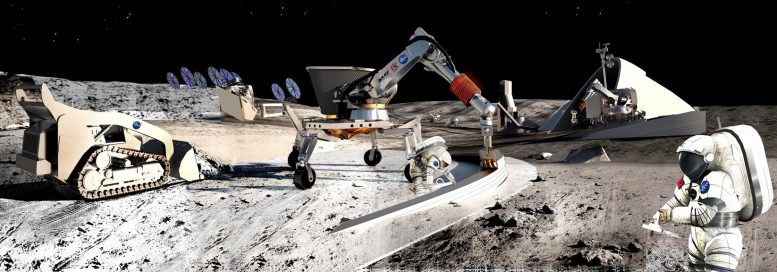
This artist’s concepts depicts an example of a construction strategy from Contour Crafting and University of Southern California. The approach was selected by the NASA Innovative Advanced Concepts (NIAC) Project. Contour Crafting technology has potential for building safe, reliable and affordable lunar and Martian structures, habitats, laboratories and other facilities. Contour Crafting construction systems are being developed that exploit in-situ resources and can utilize regolith as construction material. Credit: Contour Crafting and University of Southern California
Similar to when early explorers crossed vast oceans to reach new worlds, NASA engineers and scientists now are developing the tools that will allow astronauts to live off the land of an asteroid, the moon, or Mars.
At NASA’s Kennedy Space Center in Florida, researchers are studying how to best practice in-situ resource utilization (ISRU), that is, harvesting and relying on available raw materials as astronauts visit deep-space destinations.
Josephine Burnett, director of Kennedy’s new Exploration Research and Technology Programs organization, points out the significance of creating new capabilities.
“Pioneering space will require several game-changing technologies, some of which are being developed here at Kennedy,” said Burnett. “These new technological capabilities will enable NASA to become less dependent on Earth-based logistics and instead use local resources to maintain a sustained human presence in space.”
According to Jack Fox, chief of the Science and Technology Projects Division of the Exploration Research and Technology Programs Directorate at Kennedy, ISRU could reduce the weight of an outfitted exploration spacecraft by 40 percent.
“The purpose of our in-situ resource utilization research is to harness these resources,” he said. “When the early settlers came to North America, they brought only ax heads. They knew they could make ax handles from trees they would find when they reached their destination. We believe learning to live off available resources will significantly reduce the mass, cost, and risk of near and long-term space exploration.”
Fox explained that resources such as water ice, metals, and regolith will be available in great supplies whether planning to work on the moon, Mars, or other destinations.
Regolith is a layer of loose material covering solid rock. It includes dust, soil, broken rock, and other related materials and is present on Earth, the moon, some asteroids, and Mars.
One resource that is key to numerous applications is water.
“Several recent planetary missions have sent back data that points to lunar water representing a significant resource that could be used by future explorers,” Fox said.
The Clementine mission, launched from Vandenberg Air Force Base in 1994, conducted a bistatic radar experiment that showed water might exist in the Shackelton crater near the lunar south pole.
Officially called the Deep Space Program Science Experiment, the objective of the Clementine mission was to test sensors and spacecraft components under extended exposure to the space environment and to make scientific observations of the moon and an asteroid.
Launched from Cape Canaveral Air Force Station in 1998, the Lunar Prospector mission detected elevated amounts of hydrogen in both of the moon’s polar regions, but could not distinguish its chemical form. Other data returned during the mission also helped scientists construct a detailed map of the lunar surface composition.
NASA’s mini-RF and M3 instruments on the Indian Space Research Organization’s Chandrayaan-1 lunar orbiter provided more information on the moon’s water resources. Chandrayaan-1 was India’s first lunar probe, launched in 2008,
Flown from the Cape in 2009, more potential water resources were located by the Lunar Reconnaissance Orbiter and the Lunar Crater Observation and Sensing Satellite (LCROSS) missions.
Besides the obvious benefits of water itself, it is made up of hydrogen and oxygen.
“By separating these elements, we have what it takes to operate fuel cells to create electricity,” Fox said. “That gives us a power plant on a distant destination.”
A fuel cell converts energy from an element, such as liquid hydrogen, into electricity through a chemical reaction with liquid oxygen or another oxidizing agent.
Such technology is under development at Kennedy. The Regolith and Environment Science and Oxygen and Lunar Volatiles Extraction (RESOLVE) payload is in development for a planned Resource Prospector probe. This ISRU-driven mission features a rover that would map lunar volatiles, drill to extract samples, and process water and other volatiles.
In planetary science, volatiles are chemical elements and compounds with low boiling points that are associated with a planet or moon’s crust or atmosphere.
“RESOLVE is an important first step in enabling long-duration human exploration by actually extracting water from under the lunar surface,” Fox said.
Hydrogen and oxygen are the most efficient chemical rocket propellants known. Therefore, extracting these elements from local lunar resources might permit using the moon as a “gas station” for a spacecraft to explore further into the solar system. Oxygen and water obviously represent valuable life-support commodities.
Since 1965, a fleet of robotic spacecrafts have flown by, orbited, and landed on Mars. Collectively, they have dramatically increased the knowledge base about the Red Planet, helping pave the way for human pioneers.
Robotic scientific rovers now are being developed to further determine what raw materials are available and in what quantities. A prototype rover called RASSOR, for Regolith Advanced Surface System Operations Robot, has been tested at Kennedy’s Swamp Works. Established to provide rapid, innovative, and cost-effective exploration mission solutions, Swamp Works leverages partnerships across NASA, industry, and academia.
“RASSOR is designed to climb over difficult terrain,” Fox said. “It has wheels with scoops that pick up regolith. It could be used to collect samples or excavate a landing pad for future landers. While the first generation RASSOR has been very successful, we now are working on RASSOR 2 which will be lighter in weight and use less energy.”
As a resource, regolith shows promise for construction partly due to the extensive presence of volcanic basalt in the surface soil.
“Construction materials containing basalt and a bonding agent would be two to three times stronger in compression than normal cement concrete typically used here on Earth,” Fox said. “It would be an excellent raw material for construction on the moon or Mars.”
Fox noted that the strength of basalt in construction is demonstrated in second-century Roman architecture which has withstood the elements for centuries.
“We recently teamed with researchers at the Marshall Space Flight Center and the U.S. Army to study how to use regolith to build structures to support the exploration of Mars,” he said.
Planetary surface construction and mining tasks that may be possible using planetary regolith include launch and landing pads, equipment shelters, regolith mining for oxygen production, and water ice mining from shadowed craters.
While NASA develops ways to use available resources at deep-space destinations, crews aboard the International Space Station (ISS) are performing human research experiments and testing advanced environmental and life support systems.
The ability to grow food and recycle carbon dioxide into breathable oxygen may prove crucial for astronauts and add to the body of knowledge as they live in space for months or years at a time. A plant habitat with a large growth chamber also is being studied by Kennedy engineers to determine the effect long-duration microgravity exposure has on plants in space. Similarly, projects such as NASA’s Veggie pave the way to growing and eating food in space.
The Veggie experiment is being used aboard the ISS to study the in-orbit function and performance of a new expandable plant growth facility.
To continue research into the availability and accessibility of raw materials for human exploration of Mars, NASA is planning the Mars 2020 mission, building on the success of the Curiosity mission. Scheduled for launch in 2020, the rover mission goals include detecting and characterizing ancient environments that could have harbored life, caching samples for a future sample return mission, and testing the ability to extract oxygen from the Red Planet’s carbon-dioxide atmosphere to prepare for future human exploration.
The Mars Oxygen ISRU Experiment (MOXIE) will test a solid oxide electrolysis technology that could be scaled up to meet human mission requirements, while the Mars Environment Dynamics Analyzer (MEDA) will improve the understanding of atmospheric dust.
In addition to NASA and space agencies of other nations, Fox believes there will be future commercial interest in the utilization of resources on the moon or planets.
“There are so many possibilities for mining raw materials and putting resources to work, industries may find it economically useful to join this effort,” he said.
Technology investments in space can create new markets, thus stimulating the growth of the nation’s economy.
“We know there are solvable challenges for human missions to Mars,” Fox said. “We have multiple programs in progress that will allow us to overcome the unknowns and make the best use of what we need to take along and what we’ll find when we get there.”


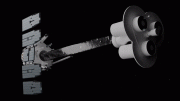


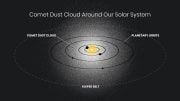

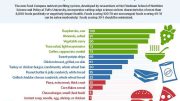
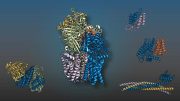
Space X is planning on going to the Moon with a ship that can carry over 150 tons around 2022. Is Nasa doing any planning to use the Space X BFR for landing on the moon? If not why not? To put it bluntly with 150 tons plus the last thing the moon rovers have to worry about is weight of packaging everything inside a shoe box. This will save billions if Nasa starts using the BFR in their design requirments now instead of waiting until the BFR actually lands on the moon so Nasa can say “Damn the ass hole Musk made it. Maybe we should start designing equipment to use it.”